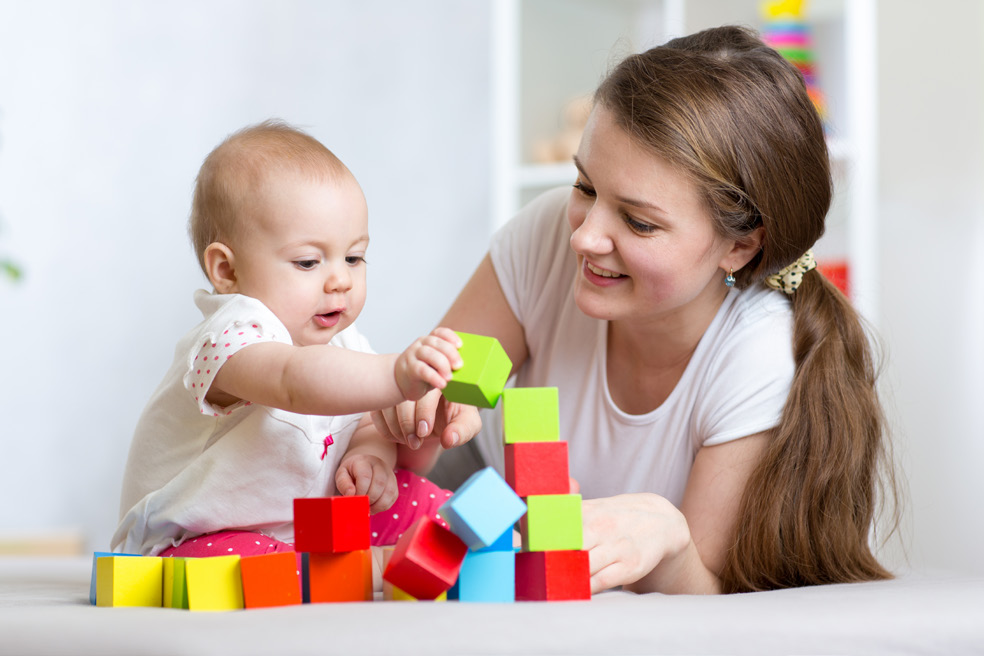Baby PACEs: Protecting Your Young Child Against Adversity
What are Protective and Compensatory Experiences (PACEs)?
Protective and compensatory experiences (PACEs) are positive resources or relationships that occur in the first few years of life. These experiences can lead to stronger families and protect young children from the effects of early trauma or hardship.
Adverse Childhood Experiences (ACEs) and PACEs:
Adverse childhood experiences (ACEs) take the form of early trauma or hardships that
young children may be faced with in their first years. ACEs can have long-lasting
and
harmful effects on children. However, PACEs can lessen the effects of ACEs.
What Can Parents Do to Promote PACEs?
Parents are their child’s main providers and protectors. By bringing PACEs into the lives of young children, parents protect them from adversity, and give them a strong base to build on as they grow. Here are a few ideas for parents:
Provide Nurturing Care
Nurturing parenting improves health and well-being in young children. 
What is nurturing parenting?
- Responding in sensitive ways to soothe and support babies.
- Not responding in harsh, frightening or punishing ways
What does it do?
- Helps babies develop trust in their parents and caregivers.
- Being loved and cared for starts babies off right. This healthy start can make a big difference in protecting them against the effects of childhood adversity.
The 10 Baby PACEs
- nurturing care
- play with another child
- promoting empathy
- play groups
- another adult caregiver
- safe and child-friendly home
- daily opportunities for learning
- family outings
- physical activity
- rules and routines
Provide Emotional Guidance
Empathy, perspective taking and sharing are important skills for young children to
begin practicing as they interact with siblings, peers and parents.
- What is emotional guidance?
Parents play a key role in developing their child’s emotion skills as they set an example for emotional behavior, respond to their child’s emotions and build and keep a family home that supports emotional growth. - What does it do?
Children who are taught about their own emotions and learn how to understand the emotions of others tend to develop better behavior, even in difficult situations
Provide Opportunities for Play and Physical Activity
Children need time to move, explore and play. Play helps children build strong bones
 and muscles, learn to face fears, make friends and share feelings. It is also helpful
for children to have time to play with other children their age, as playing with others
helps build social and emotional skills. Finally, playing is the best way for babies
and toddlers to be physically active. Children who have regular opportunities to play
are better able to manage stress and anxiety.
and muscles, learn to face fears, make friends and share feelings. It is also helpful
for children to have time to play with other children their age, as playing with others
helps build social and emotional skills. Finally, playing is the best way for babies
and toddlers to be physically active. Children who have regular opportunities to play
are better able to manage stress and anxiety.
Provide a Safe Home with Consistent Rules and Routines
Infants and toddlers do best when their basic needs are met. These needs include clean and safe places to play and explore, warm interactions with caregivers and siblings, limited screen time and nutritious meals. It also helps young children to feel secure when they have regular rules and routines to keep them safe and stable. For example, regular nap and bedtimes, bath times and meal times. Parents who provide a safe, predictable home can help ease feelings of distress and insecurity in their child.
Provide Daily Opportunities for Learning
Parents are their child’s first teachers. Through positive daily interactions, parents can jumpstart their child’s learning, language and brain development. Such interactions could include reading, story-telling, singing and playing games. Parents can also teach their children about the world though family outings to places such as parks, museums, zoos or even their own backyard. Family outings are great for building curiosity and helping children find their own interests. Such outings may even become traditions that can strengthen family relationships.
Additional Resources for Parents and Children
- OSU Fact Sheet – How Parents Can Heal from Childhood Adversity: PACES for Parents
- OSU Fact Sheet – PACES for Children: Overcoming Adversity and Building Resilience
- ACEs Connection
- National Child Traumatic Stress Network
References
Baumrind, D. (1971). Current patterns of parental authority. Developmental Psychology, 4(1p2), 1.
Golinkoff, R. M., Hoff, E., Rowe, M. L., Tamis-LeMonda, C. S., & Hirsh-Pasek, K. (2019). Language matters: Denying the existence of the 30-million-word gap has serious consequences. Child Development, 90(3), 985-992.
Hays-Grudo, J. & Morris, A.S. (in press). Adverse and protective childhood experiences: A developmental perspective. Washington DC: APA Press.
Morris, A. S., Silk, J. S., Steinberg, L., Myers, S. S., & Robinson, L. R. (2007). The role of the family context in the development of emotion regulation. Social Development, 16(2), 361-388.
Prado, E. L., & Dewey, K. G. (2014). Nutrition and brain development in early life. Nutrition Reviews, 72(4), 267-284.
Spagnola, M., & Fiese, B. H. (2007). Family routines and rituals: A context for development in the lives of young children. Infants & Young Children, 20(4), 284-299.
Zabriskie, R. B., & McCormick, B. P. (2001). The influences of family leisure patterns on perceptions of family functioning. Family Relations, 50(3), 281-289.
Jens Jespersen
Graduate Student, Human Development and Family Science
Amanda Sheffield Morris
Regents Professor and Child Development Specialist
Jennifer Hays-Grudo
Regents Professor
Department of Psychiatry and Behavioral Sciences
